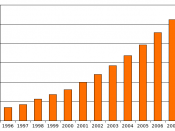Medical and psychological models of children's development have tended to follow two discrete paths. The medical model tends to assume a line of pathology that seeks causation and remediation. Psychological models tend to embrace a developmental approach, in which social and cultural norms play an equal, if not larger part, in pursuing the interests of the child. This essay seeks to compare the two models, using Down's Syndrome and autism as the main vehicles for analysis and discussion and to contrast how the two approaches attempt to address children's development.
One fundamental difference in the medical and psychological approaches has been in the use of terminology. The medical model seeks to diagnose a patient with a disease or symptoms that requires treatment. It often uses terms that label the child in ways that seek to categorise the child, as if, ownership of a disorder were solely attributable to the individual.
This contrasts with most recent psychological approaches that conceptualise the child, as a member of a wider social group who has certain needs, that with intervention will attempt to enable him or her to live as normal a life as possible. It is implicit in this approach that whilst the child may have a disability, the "ÃÂproblem', belongs within society. (It is probably fair to say that this is, albeit to a much lesser extent today, still aspirational) It could be argued that in both models a "ÃÂproblem' exists, in some cases, because there are wider cultural expectations that require individuals to behave and conform in certain ways to defined developmental milestones. Thus, there is an (unwitting) attempt to homogenise individuals within social norms.
With Down's Syndrome it is now clearly understood as a congenital condition. Although there are several variations of the syndrome, by far the most common are...


